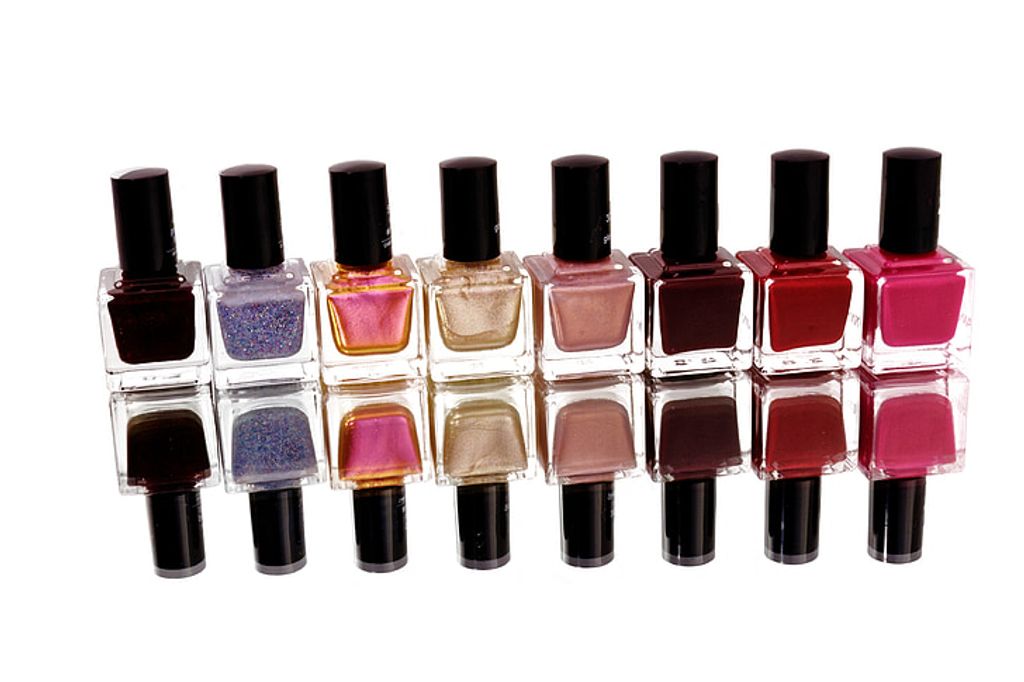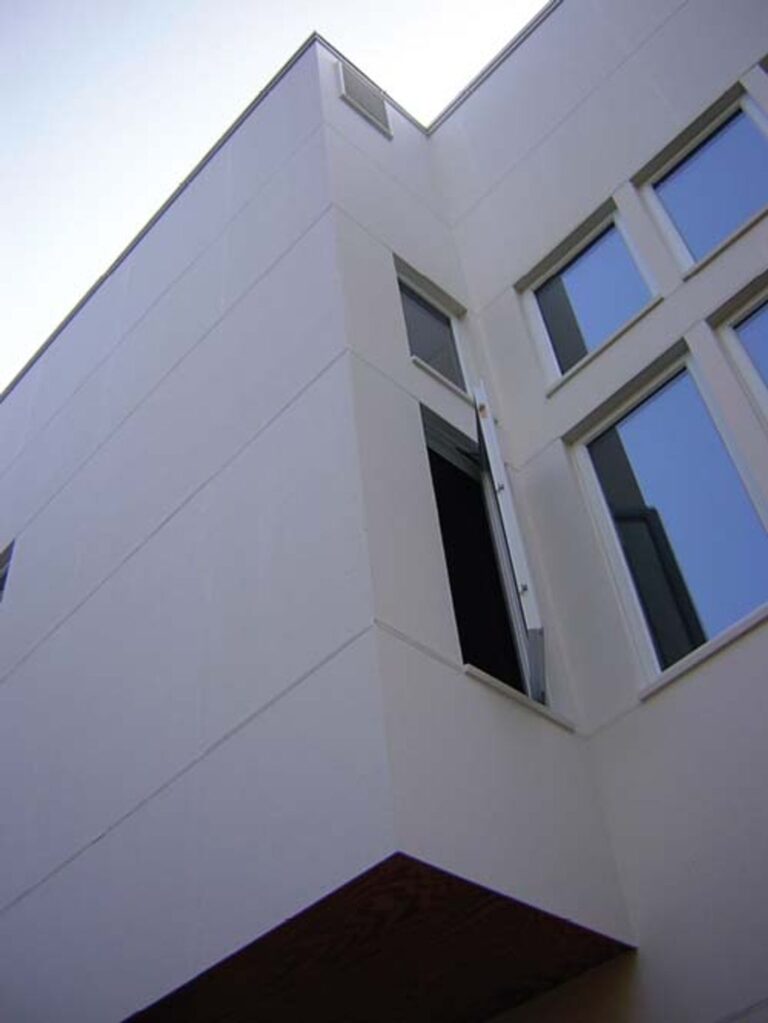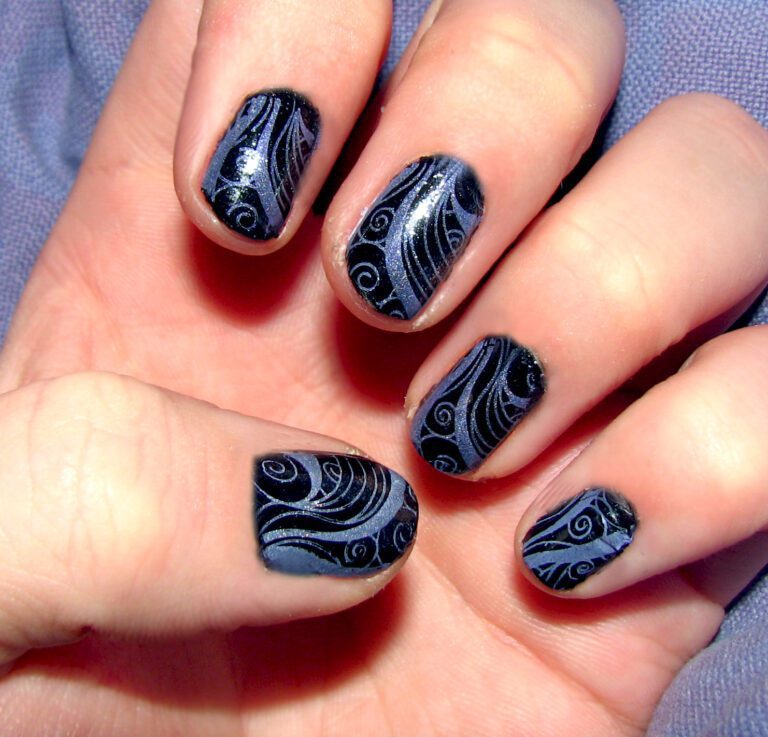“Used and Abused: Nails and Where They’re Used”
Deprecated: mb_convert_encoding(): Handling HTML entities via mbstring is deprecated; use htmlspecialchars, htmlentities, or mb_encode_numericentity/mb_decode_numericentity instead in /home/u654140373/domains/nailinspire.com/public_html/wp-content/plugins/kadence-pro/dist/elements/elements-init.php on line 1267
Deprecated: Function utf8_decode() is deprecated in /home/u654140373/domains/nailinspire.com/public_html/wp-content/plugins/kadence-pro/dist/elements/elements-init.php on line 1275
Nails have been an essential component of construction and woodworking for centuries, playing a crucial role in shaping the built environment. From ancient forged iron nails to modern steel fasteners, the evolution of nails has been intertwined with the progress of human civilization. This article explores the multifaceted uses of nails across various domains and sheds light on their cultural, environmental, and industrial significance.
Key Takeaways
- Nails have evolved from forged iron to modern steel, reflecting advancements in material science and manufacturing processes.
- Joinery, the art of nailing wood together, showcases the precision and skill required in carpentry.
- Understanding the environmental impact of nail production is crucial for promoting sustainability in construction and manufacturing.
- Nails hold cultural significance, with symbolic uses in art, architecture, and folklore.
- Selecting the right nail for a specific task is essential for ensuring structural integrity and longevity.
The Evolution of Nails in Construction

From Forged Iron to Modern Steel
The journey from forged iron to modern steel nails is a testament to human ingenuity in the face of evolving construction needs. Initially, nails were laboriously hand-forged by blacksmiths, each one unique and time-consuming to produce. As the demand for nails grew with the expansion of construction, the need for a more efficient production process became apparent.
Mass production of nails began in the 19th century with the introduction of cut nails, which were sheared from sheets of iron. This process was later refined with the advent of machine-made nails, leading to the widespread availability of uniform, strong, and affordable steel nails. Today’s nails are manufactured using high-speed, precision machinery, ensuring consistent quality and performance.
- Hand-forged nails: Unique, labor-intensive
- Cut nails: Sheared from iron sheets
- Machine-made nails: Uniform, mass-produced
When selecting nails for a project, consider the historical context and structural requirements to ensure authenticity and integrity.
Innovations in Nail Design and Materials
The world of nail design has seen a significant transformation with the advent of new materials and innovative manufacturing techniques. Composite nails, made from a blend of plastic and metal, have emerged as a lightweight yet durable alternative to traditional steel nails. These composites offer superior resistance to corrosion and can be engineered for specialized applications.
Advancements in nail coatings have also played a pivotal role in extending the lifespan of nails. Galvanized nails, coated with a layer of zinc, are particularly valued for their ability to withstand harsh outdoor conditions. Similarly, electroplating and chemical treatments have been developed to enhance nail performance in various environments.
- Coated Nails: Improved durability and rust resistance
- Ring Shank Nails: Greater holding power in wood
- Plastic Strip Nails: For use with pneumatic nail guns
Tip: When selecting nails for a project, consider the environmental conditions and the materials being joined to ensure optimal performance and longevity.
The Role of Nails in Historical Building Techniques
Throughout history, nails have played a pivotal role in construction, evolving from crude wooden pegs to the sophisticated metal fasteners we use today. In ancient times, the use of nails was often a sign of wealth and stability, as they were labor-intensive to produce and therefore expensive.
The durability of a structure was greatly enhanced by the use of nails, which allowed for stronger connections between building materials. For example, in timber framing, nails were used to secure joints and provide additional support to the wooden framework. This technique was crucial in the development of multi-story buildings, which required a robust framework to withstand the forces of gravity and weather.
Historical building techniques that relied on nails include:
- The use of clout nails in roofing to provide a watertight seal.
- Nailing wooden planks to ship hulls for added strength and durability.
- Securing armor plates in medieval fortifications.
Tip: When restoring historical buildings, it’s important to match the type and style of nails used originally to maintain the integrity and authenticity of the structure.
Nails in the World of Carpentry

Joinery: The Art of Nailing Wood Together
Joinery is the cornerstone of carpentry, where the true skill of a craftsman is showcased. The art of nailing wood together requires precision and an understanding of how different joints contribute to the integrity of a structure. Nails serve as critical fasteners in various types of wood joints, from simple butt joints to more complex dovetails.
When selecting the right nail for a joinery project, one must consider the nail’s length, diameter, and material. For instance, a finish nail is often used for trim work due to its small head, while a common nail provides the strength needed for framing. Below is a list of common nail types and their typical applications in joinery:
- Finish Nails: Trim and molding
- Common Nails: Framing and structural work
- Box Nails: Lighter wood assemblies
- Casing Nails: Door and window casings
Tip: Always pre-drill holes for nails when working with hardwoods to prevent splitting.
Understanding the role of nails in joinery not only ensures a strong bond but also enhances the aesthetic appeal of the finished piece. The right nail, properly placed, can be the difference between a project that lasts for years and one that fails prematurely.
Selecting the Right Nail for Your Carpentry Project
Selecting the appropriate nail for your carpentry project is crucial for both the integrity of the build and the ease of your work. The size, shape, and material of the nail can significantly affect the final outcome. For instance, when framing walls, the choice of nail size is essential to ensure structural stability.
- Brad Nails vs. Finish Nails: Brads are thinner and ideal for delicate trim work where you want to minimize splitting. Finish nails are thicker and provide more holding power for larger trim and moldings.
- Nail Length: The length of the nail should be at least three times the thickness of the material you are fastening.
- Nail Material: Choose a nail material compatible with your workpiece to prevent corrosion or staining.
Tip: Always consider the end use of your project. For outdoor projects, opt for galvanized or stainless steel nails to resist weathering.
Remember, the wrong nail can turn a masterpiece into a disaster. Take the time to understand the specific requirements of your project and choose accordingly.
Troubleshooting Common Nail-Related Issues in Woodwork
When working with wood, encountering nail-related issues is not uncommon. From bent nails to wood splitting, these problems can compromise the integrity of a carpentry project. Understanding how to address these issues is crucial for both professionals and DIY enthusiasts.
Bent nails can be a frustrating occurrence, often caused by hitting the nail at the wrong angle or using a nail that’s too soft for the wood. To avoid this, ensure you’re using the right type of nail and angle your hammer correctly. If a nail does bend, carefully remove it with the claw of a hammer and try again with a new nail, taking care to hit it straight.
Splitting wood is another issue that can arise, particularly when nailing near the end of a board. To prevent this, consider pre-drilling holes for the nails, especially when working with hardwoods or close to the edge of the wood. This extra step can save time and materials in the long run.
Tip: Always wear safety goggles when hammering nails to protect your eyes from flying debris.
For those who encounter nails that won’t sink completely, using a nail set can help. Place the nail set on the head of the nail and tap it with a hammer until the nail is flush with or slightly below the wood’s surface. This technique provides a cleaner finish and prepares the wood for filling or painting.
Industrial Uses of Nails

Nails in Manufacturing: More Than Just a Fastener
In the manufacturing world, nails serve a pivotal role that extends far beyond their traditional use as simple fasteners. These small metal objects are integral to the structural integrity and assembly of a wide range of products. From furniture to electronics, nails are often the unsung heroes holding everything together.
Nails used in manufacturing are typically subject to stringent quality controls, ensuring they meet the necessary specifications for each application. Here’s a brief overview of the types of nails commonly used in manufacturing:
- Box nails: Ideal for lighter, thinner wood where splitting is a concern.
- Common nails: The most versatile type, used for rough framing and construction.
- Finishing nails: Have a smaller head, used for finer applications where appearance is important.
- Double-headed nails: Designed for temporary structures, allowing for easy removal.
Tip: Always select the nail that best matches the material and purpose of your project to avoid structural failures or aesthetic issues.
The production of nails has also evolved to incorporate advanced materials and coatings that enhance their durability and performance. For example, galvanized nails resist rust and corrosion, making them suitable for outdoor or moisture-prone environments. The use of nails in manufacturing is a testament to their versatility and the ongoing innovation in nail technology.
Heavy-Duty Nails for Industrial Applications
When it comes to industrial applications, durability is the key factor in selecting the right nails. Heavy-duty nails are designed to withstand extreme conditions and provide unparalleled strength and stability. These nails are commonly used in construction, manufacturing, and other industrial settings where reliability is non-negotiable. The table below showcases the specifications of the Grip-Rite® Common Box Nail, a popular choice for industrial use:
| Specification | Details |
|---|---|
| MFR# | 60C |
| Quantity | 50lb box of Approximately 500 nails |
| Length | 6" (15.2 cm) |
| Head | Flat Round Head |
| Shank | Sturdy Smooth Shank |
| Material | Bright, Uncoated Steel |
In addition to the Grip-Rite® Common Box Nail, other heavy-duty staples and framing nails are also widely used in industrial applications. These nails are known for their exceptional performance and are a testament to the robust nature of industrial-grade fasteners. It’s crucial to prioritize the quality and reliability of these nails to ensure the structural integrity of industrial projects.
When working with heavy-duty nails, it’s important to consider the application and material requirements. Proper selection and installation of these nails are essential for achieving optimal results and long-term durability. Always adhere to the manufacturer’s guidelines and industry standards to guarantee the effectiveness of heavy-duty nails in industrial applications.
Quality and Safety Standards for Industrial Nails
In the industrial sector, the quality and safety of nails are paramount. These components must adhere to strict standards to ensure they can withstand the rigors of heavy-duty use without failing. OSHA standards play a crucial role in defining these requirements, setting guidelines that manufacturers must follow to minimize health and safety risks.
When selecting industrial nails, it’s essential to understand the specific standards applicable to your project. These might include material composition, load-bearing capacity, and resistance to environmental factors. For instance, nails used in outdoor constructions must be treated to resist corrosion.
Compliance with safety standards is not just about adhering to regulations; it’s about ensuring the longevity and reliability of the structures we build. Regular inspections and testing are part of maintaining these standards, with many companies conducting rigorous hands-on testing to assess nail performance.
Always use the right type of nail for the task at hand, and never compromise on quality for cost savings. The integrity of your project depends on it.
Nails in Home Improvement and DIY Projects

Choosing Nails for Home Renovation Tasks
Selecting the right type of nail for your home renovation project is crucial for both the integrity of the work and the ease of the task at hand. The size, gauge, and material of the nail can significantly affect the outcome of your project. For instance, a brad nailer, which uses 18-gauge nails, is ideal for delicate trim work where the appearance of the nail head is a concern, while a finish nailer, suitable for heavier tasks, uses larger gauge nails.
When working on specific materials such as Hardie siding, it’s important to choose nails that are compatible and will ensure a successful installation. The length and type of nail will vary depending on the material’s thickness and the environmental conditions it will face.
Tip: Always consider the power and size requirements of the nailer you plan to use. Larger construction projects may require more robust nailers, while smaller home tasks could be managed with less powerful tools.
Understanding the different types of nail guns can also be beneficial. There are at least 9 different types, each designed for specific tasks. Matching the right type of nail gun to the job can make your home improvement project more efficient and effective.
Creative Uses of Nails in DIY Endeavors
The world of DIY is a playground for the imaginative, and nails serve as tiny building blocks for countless creative projects. Nail art, for instance, has transcended the boundaries of beauty and entered the realm of craft. With just a handful of nails and some string, enthusiasts can create intricate string art that brings walls to life with geometric patterns and personalized designs.
Repurposing materials is a cornerstone of DIY, and nails are no exception. Old nail polish, for example, can be given a second life, transforming mundane items into vibrant, decorative pieces. This not only adds a splash of color to your creations but also contributes to a more sustainable crafting practice.
- String Art: Create geometric patterns or personalized images.
- Decorative Accents: Use old nail polish to revamp accessories.
- Homemade Tools: Craft leverage devices from common objects.
Remember, the key to successful DIY projects is not just creativity, but also the understanding of materials and tools. Nails, whether used traditionally or inventively, can provide both structure and style to your endeavors.
The Do’s and Don’ts of Nailing Techniques
When it comes to nailing techniques, it’s crucial to maintain precision and apply the right amount of force. This ensures that the nail is securely fastened without causing damage to the material. Additionally, always inspect the nail before use to check for any defects or irregularities. Remember, proper technique and attention to detail are key to achieving professional results.
For a quick reference, here are some important tips to keep in mind:
- Use the right size and type of nail for the specific task.
- Avoid overdriving nails, as it can weaken the material and compromise the integrity of the joint.
- When nailing near the edge of a board, pre-drill to prevent splitting.
- Ensure that the nail is driven in straight to prevent bending or misalignment.
Always prioritize precision and care when nailing. Taking the time to execute each step correctly will lead to superior and long-lasting results.
Environmental Impact and Sustainability of Nail Production

The Carbon Footprint of Nail Manufacturing
The manufacturing of nails, like many industrial processes, has a significant carbon footprint. The energy-intensive production, primarily powered by fossil fuels, contributes to greenhouse gas emissions. However, the industry is taking steps to mitigate environmental impacts.
- Use of recycled materials
- Implementation of energy-efficient manufacturing technologies
- Adoption of renewable energy sources
Tip: When purchasing nails, consider those made from recycled materials to support sustainability efforts.
Efforts to reduce the carbon footprint include the introduction of eco-friendly materials and processes. For instance, some companies have shifted to using plant-based products, which are less carbon-intensive than traditional materials.
Recycling and Reusing Nails: A Step Towards Sustainability
In the quest for sustainability, the practice of recycling and reusing nails plays a pivotal role. Recycling nails not only conserves valuable resources but also reduces the environmental burden of waste. When nails are salvaged from demolition sites or leftover from projects, they can be refurbished and repurposed, extending their lifecycle and minimizing the need for new material production.
Tip: Always check for rust and damage before reusing nails to ensure structural integrity.
The process involves sorting, cleaning, and sometimes reshaping the nails to fit new purposes. This not only applies to metal nails but also to other materials used in the nail industry, such as metal tools and glass from beauty products. However, it’s important to note that not all nail-related products are recyclable. For instance, nail polish and removers are considered hazardous waste due to their flammability and toxicity.
Eco-friendly alternatives are also gaining traction. These include nails made from recycled materials or designed to be easily removed and reused. By choosing such alternatives, consumers and professionals alike contribute to a more sustainable practice in nail usage.
Eco-friendly Alternatives to Traditional Nails
In the quest for sustainability, the construction and carpentry industries are turning towards eco-friendly alternatives to traditional nails. These greener options are not only better for the environment but also offer a safer choice for both professionals and DIY enthusiasts. Eco-friendly nails are typically made from recycled materials or sustainable resources, reducing the carbon footprint associated with their production.
One of the most promising developments is the use of biodegradable materials in nail manufacturing. These nails decompose naturally over time, minimizing their impact on the planet. Additionally, innovations in nail coatings and treatments have led to the creation of less toxic and low-VOC (Volatile Organic Compounds) options, which contribute to a healthier work environment and indoor air quality.
Tip: When selecting eco-friendly nails, consider the source of the materials and the manufacturing process to ensure you’re making the most sustainable choice.
Here’s a list of considerations for choosing eco-friendly nails:
- The material’s recyclability and biodegradability
- The manufacturing process’s energy efficiency
- The absence of harmful chemicals in the nail’s composition
- The durability and longevity of the nail, to reduce waste
By opting for eco-friendly nails, not only do we contribute to a healthier ecosystem, but we also support the growing market for sustainable building materials.
Cultural Significance of Nails

Nails in Folklore and Superstition
The lore surrounding nails extends far beyond their practical applications. In various cultures, nails have been imbued with symbolic significance and are often at the heart of many superstitions. For instance, it is believed that pounding a nail after sundown could awaken the tree gods, an act of respect and caution among those who hold such beliefs.
In the realm of witchcraft, nails are said to possess protective powers akin to horseshoes. A common practice was to drive a nail through the picture of a witch near the heart as a means to counteract a charm or even to harm the witch herself. Similarly, the use of nails in ‘witch-bottles’, along with personal effects like urine, nail clippings, and hair, was thought to protect against malevolent spells.
- Never pound a nail after sundown to avoid disturbing the tree gods.
- Nailing an evergreen branch to new rafters is believed to bring good luck.
- An empty hornet’s nest, hung high with a nail, is an omen of good fortune.
Remember, while these practices are rooted in tradition, they reflect the rich tapestry of human belief and the enduring cultural significance of everyday objects like nails.
Symbolic Uses of Nails in Art and Architecture
In the realm of art and architecture, nails have transcended their utilitarian purpose to become symbols with profound meanings. Often, they are used to signify strength, permanence, and the intersection of the divine with the earthly. For instance, in religious structures, nails may be deliberately placed or highlighted to denote sacredness or to evoke the crucifixion nails of Christian iconography.
- In Gothic architecture, nails were sometimes crafted into elaborate designs, serving both a functional and an aesthetic role.
- Contemporary artists have used nails in sculptures and installations to represent themes of pain, endurance, or time.
Tip: When observing nails in art or architecture, consider their placement and material as these can offer additional layers of symbolism.
The use of nails in cultural expressions is not only a testament to their enduring presence in human history but also to the versatility of their symbolism across different contexts.
Nails as Historical Artifacts
Nails have transcended their utilitarian purpose to become symbolic artifacts in various cultures. From ancient Egypt to modern times, nails have held cultural and historical significance, often representing strength, endurance, and craftsmanship. The symbolic use of nails in art and architecture reflects the values and beliefs of different societies, offering a unique insight into their cultural identity. Additionally, nails as historical artifacts serve as tangible links to the past, preserving the craftsmanship and ingenuity of previous generations. These artifacts provide a glimpse into the technological advancements and cultural practices of bygone eras, enriching our understanding of human history and creativity.
Nails have a deep cultural significance that spans across various traditions and societies. From ancient civilizations to modern pop culture, nails have played a significant role in self-expression, beauty, and personal identity. The art of nail design has evolved over time, reflecting the creativity and individuality of people around the world. At NAILinspire.com, we celebrate the rich history and cultural importance of nails while providing a platform for nail art enthusiasts to explore, learn, and create. Join us in discovering the fascinating world of nail art and design.
Frequently Asked Questions
What are the different types of nails used in construction?
There are several types of nails used in construction, including common nails, finish nails, roofing nails, and concrete nails, each designed for specific purposes and materials.
How do I choose the right nail for my woodworking project?
Selecting the right nail for a woodworking project depends on factors such as the type of wood, the intended use, and the desired appearance. It’s important to consider the size, material, and style of the nail.
Are there eco-friendly alternatives to traditional nails?
Yes, there are eco-friendly alternatives to traditional nails, such as recycled nails, biodegradable nails, and nails made from sustainable materials like bamboo or reclaimed wood.
What are some common nail-related issues in home renovation?
Common nail-related issues in home renovation include nail pops, bent nails, nail splitting, and improper nail placement. These issues can affect the structural integrity and appearance of the project.
What is the environmental impact of nail production?
Nail production can have a significant environmental impact, contributing to carbon emissions, resource depletion, and waste generation. It’s important to consider the sustainability of nail manufacturing processes.
How have nails been represented in folklore and superstition?
Nails have been associated with folklore and superstition in various cultures, often symbolizing protection, warding off evil spirits, or serving as talismans for good luck. These beliefs have influenced the cultural significance of nails in art and architecture.






